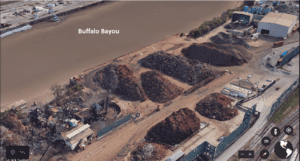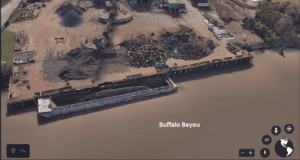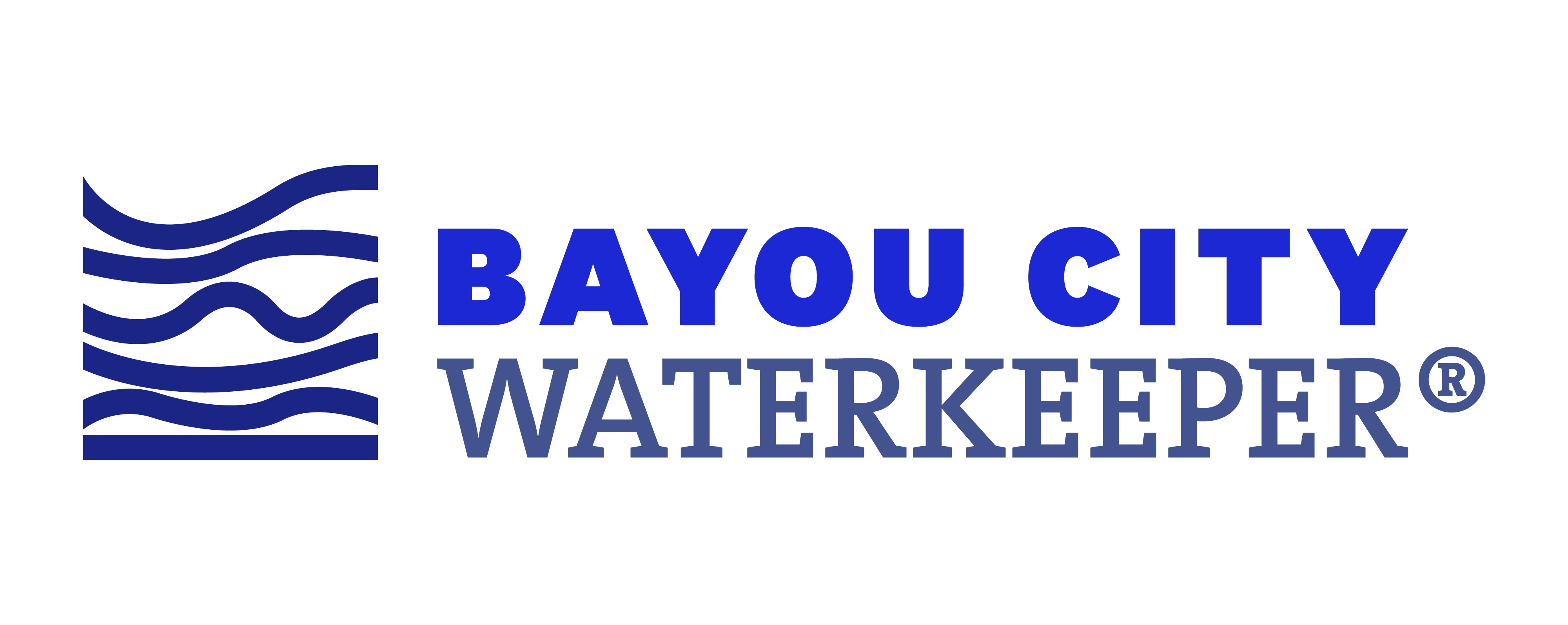This is a guest post by June Hormell, a summer 2020 legal intern.

By and large, Houston’s scrap metal yards share one striking feature – most are on or near a bayou. These waterfront locations allow the metal to be easily loaded and unloaded onto boats that travel through the Ship Channel. But this efficiency comes at a cost. These piles of metal are left out in the open, exposed to the elements. When it rains stormwater can transfer toxins in the metals to our bayous and to the Gulf. For those scrap metal yards directly on the edge of the bayou, the risk is even greater. Given a heavy enough storm, it is not unforeseeable that entire pieces of metal could be washed directly into the bayou, causing further contamination.
OSHA cautions that scrap metal is likely to contain lead The metal is often coated with paint that can contain chromium or other toxins. Proximity to the bayou means these contaminants can seep into our waterways, but it is not the only concern. Metal recycling in Houston has also been known to cause carcinogenic air pollution, harmful to human health.

Many of these scrap metal yards are located in communities of color who often cannot afford to move away from poisonous conditions. The two zip codes where I found the highest concentrations of scrap metal yards near a bayou were 77012 and 77020. These neighborhoods are Manchester and the Greater Fifth Ward, where only 2% and 4% of the population are non-hispanic white, respectively—and which face the consequences of other environmental injustices on a regular basis.
This scrap metal pollution is one small part of a long history of environmental racism in these communities. Manchester’s elementary “school was forced to shut down when they found excessively high concentrations of lead in the children’s systems.” The school was moved just 30 feet away from the intersection of two of the busiest freeways in the United States, and children are now poisoned by carbon monoxide, nitrous oxide, and other vehicle emissions each time they play outside. Decades ago, the

Southern Pacific railyard in the Fifth Ward, now owned by Union Pacific, was nicknamed el Creosote by the locals due its emissions of the carcinogenic chemical. More recently, Texas public officials identified a cancer cluster in the area, which locals attributed to creosote contamination.
State and local regulators, especially the Texas Commission on Environmental Quality, have a responsibility to better mitigate the damage done to the bayous and these communities. Until then, Bayou City Waterkeeper stands ready to assist by pushing for better permits, issued by the State of Texas under the Texas Pollutant Discharge Elimination System, and holding polluters accountable with help from the Clean Water Act’s citizen-suit provision.
 June Hormell is a second-year law student at the University of Texas. They graduated as a national merit scholar from the University of Houston with degrees in psychology and economics, and received their Masters in Public Policy from the Hobby School of Public Affairs. They have worked in several local governments, including Harris County Precinct One, Dallas ISD, and the City of Houston, working to design policy to promote sustainability, equity, and justice.
June Hormell is a second-year law student at the University of Texas. They graduated as a national merit scholar from the University of Houston with degrees in psychology and economics, and received their Masters in Public Policy from the Hobby School of Public Affairs. They have worked in several local governments, including Harris County Precinct One, Dallas ISD, and the City of Houston, working to design policy to promote sustainability, equity, and justice.
